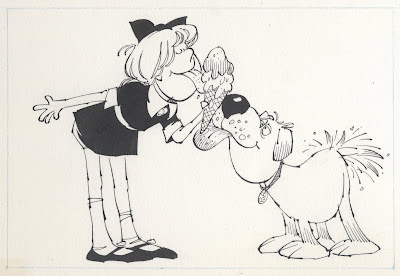A GIFT FOR DELUSION

Once upon a time, an artist was born in a shabby apartment in a bleak part of NY City. He grew up playing in vacant lots littered with junk. He watched neighbors beating their wives in the street. Once a drunk died in front of him on the sidewalk. The boy learned at a young age to call Jews "kikes" and Italians "wops." Sometimes he watched from the roof of his apartment as street gangs battled below. For amusement, he would spit on pedestrians walking by. Quitting school (he was always a poor student) he leased a spare room in a whore house. That artist was Norman Rockwell. Was Rockwell's sweet vision of small town America nothing but a cynical charade? I don't think so. We each perceive the world through our own personal filter. Sometimes artists employ a more active filter than others; perhaps it's a natural defense to their chronic poverty and lack of success with the opposite sex. Below, some artists have fun with the disparity between reality and t...







